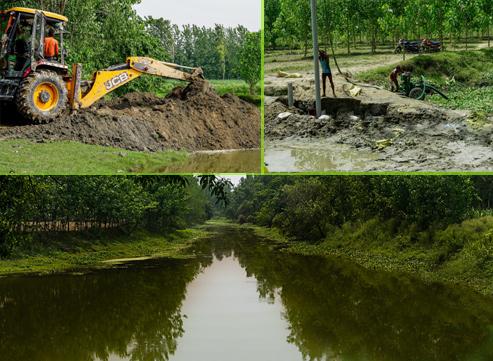Best 3 Rainwater Harvesting Methods in India
Rainwater harvesting is a centuries-old practice that continues to play a crucial role in water conservation in India. As the country faces growing water scarcity due to over-extraction and erratic rainfall patterns, adopting efficient rainwater harvesting methods has become imperative. Here are the top three rainwater harvesting methods commonly used in India, tailored to the country’s diverse climatic and geographical conditions:
1. Rooftop Rainwater Harvesting (RRH)
Rooftop rainwater harvesting is one of the most popular and practical methods of collecting and storing rainwater. This system captures rainwater falling on rooftops and channels it into storage tanks or underground reservoirs for immediate or future use.
How It Works:
Rainwater is collected from rooftops using gutters and pipes.
It is filtered to remove debris and contaminants.
The filtered water is stored in tanks or directed to recharge pits for groundwater replenishment.
Benefits:
Simple and cost-effective to implement.
Reduces dependency on municipal water supply and groundwater.
Ideal for urban and semi-urban areas.
Applications:
Domestic use (drinking, cooking, gardening, and cleaning).
Institutional and commercial buildings, like schools and offices.
Success Story: In Chennai, rooftop rainwater harvesting has been made mandatory for all buildings, resulting in improved groundwater levels and reduced water scarcity in the city.
2. Check Dams and Nala Bunding
Check dams and nala bunding are traditional water conservation structures built across streams and small rivers to slow the flow of water. By creating small barriers, these methods encourage water to percolate into the ground, recharging aquifers and improving soil moisture levels.
How It Works:
Check dams are constructed using stones, concrete, or earthen materials.
Nala bunding involves building embankments along natural drainage channels to capture runoff.
Stored water is either used for irrigation or allowed to seep underground.
Benefits:
Prevents soil erosion and water runoff.
Recharges groundwater in arid and semi-arid regions.
Supports agricultural activities during dry spells.
Applications:
Suitable for rural and hilly areas.
Used in watershed management and drought-prone regions.
Success Story: Maharashtra’s "Jalyukt Shivar Abhiyan" program employs check dams to enhance groundwater levels, benefiting farmers and rural communities.
3. Percolation Pits and Recharge Wells
Percolation pits and recharge wells focus on directing rainwater into the ground to replenish depleted aquifers. These methods are particularly effective in urban areas facing a decline in groundwater levels.
How It Works:
Percolation pits are shallow depressions filled with gravel, sand, and stones to facilitate water infiltration.
Recharge wells are vertical shafts that carry rainwater directly into underground aquifers.
Both systems are designed to handle large volumes of water and prevent surface runoff.
Benefits:
Increases groundwater availability over time.
Reduces urban flooding by capturing excess rainwater.
Can be integrated into existing urban landscapes.
Applications:
Housing complexes, parks, and institutional campuses.
Urban areas with impermeable surfaces and high water demand.
Success Story: Bengaluru has embraced recharge wells across the city to address its severe water crisis, reducing its reliance on borewells and tankers.
Conclusion
Rainwater harvesting is not just a necessity but a sustainable solution to India’s water challenges. By implementing rain water harvesting methods like Roof top Rainwater Harvesting, Check Dams, and Percolation Pits, communities can conserve water, recharge aquifers, and secure their water needs. These techniques not only address immediate water shortages but also ensure long-term water sustainability.
Promoting and adopting these methods at individual, community, and government levels is essential for building a water-secure future for India. Together, we can make every drop of rain count!










Comments